Last Test
1/48
There's no tags or description
Looks like no tags are added yet.
Name | Mastery | Learn | Test | Matching | Spaced |
|---|
No study sessions yet.
49 Terms
paleography
the study of ancient and historical handwriting
script
a particular style or system of handwriting
uncial
a rounded script commonly used from the 4th to 8th centuries, especially in Latin and Greek manuscripts
half-uncial
a script developed from uncial with more minuscule (lowercase-like) features
minuscule
a script using smaller, more connected letters; contrasts with majuscule scripts like uncial
majuscule
scripts composed entirely of capital (uppercase) letters
Caroline Minuscule
A clear uniform script developed in the 8th-9th centuries during Charlemagne’s reign
gothic script
a dense, angular script that developed in the 12th century and dominated the later Middle Ages.
codicology
the study of books as physical objects, especially manuscripts
rustic capitals
an early majuscule script used mainly for formal Roman writing from the 1st to 6th centuries
square capitals
a formal roman script used for inscriptions and some manuscripts
insular script
scripts developed in the British Isles, especially in Ireland and Anglo-Saxon England
beneventan script
a distinctive script used in southern italy from the 8th to the 13th century
chancery script
a formal script developed in the papal chancery in the later middle ages
humanist script
a revival of caroline minuscule during the Renaissance forming the basis of modern Roman typefaces
ligature
two or more letters joined into a single written unit
recto/verso
the front (recto) and back (verso) or a golio
ascender
the part of a letter that extends above the main body
descender
the part of a letter that extends below the line
ductus
the direction, order, and manner in which the strokes of a letter ae made
catchword
the word written at the bottom of a folio to anticipate the next page’s text
exemplar
the original text from which a manuscript copy is made
colophon
a note at the end of a manuscript giving information about its production
parchment
writing material made from animal skin, commonly used in medieval manuscripts
palimpsest
a manuscript in which the original writing has been scraped or washed off and overwritten
quire
a gathering of folded sheets of parchment or paper in a manuscript
incipit
the opening words of a manuscript or section
gloss
an explanatory note or translation added in the margins or between the lines of a manuscript
codex
a book made of folded sheets bound together, replacing scrolls in late antiquity
siglum
a letter or symbol used to represent a manuscript in scholarly reference
roman capitals and roman rustic
1st century BCE - 4th century CE; used in inscriptions and early codices
uncial
4th-8th century; rounded majuscule script for christian text
roman half uncial
5th-9th century; transitional toward minuscule forms
insular majuscule & minuscule
6th-9th century; developed in Ireland and Britain; highly decorative
luxeuil minuscule
7th-8th century; national hand; agresitum
caroline minuscule
8th-12th century; legibly and widely adopted across the carolingian empire; model for humanist script
gothic script
12th-16th century; dense, angular, textura/bastarda
chancery script
14th-16th century; developed for official documents; more regular and legible
humanist script
15th century onward; revival of caroline minuscule, basis for modern Roman type
italic & secretary hands
used in renaissance humanist and administrative writing
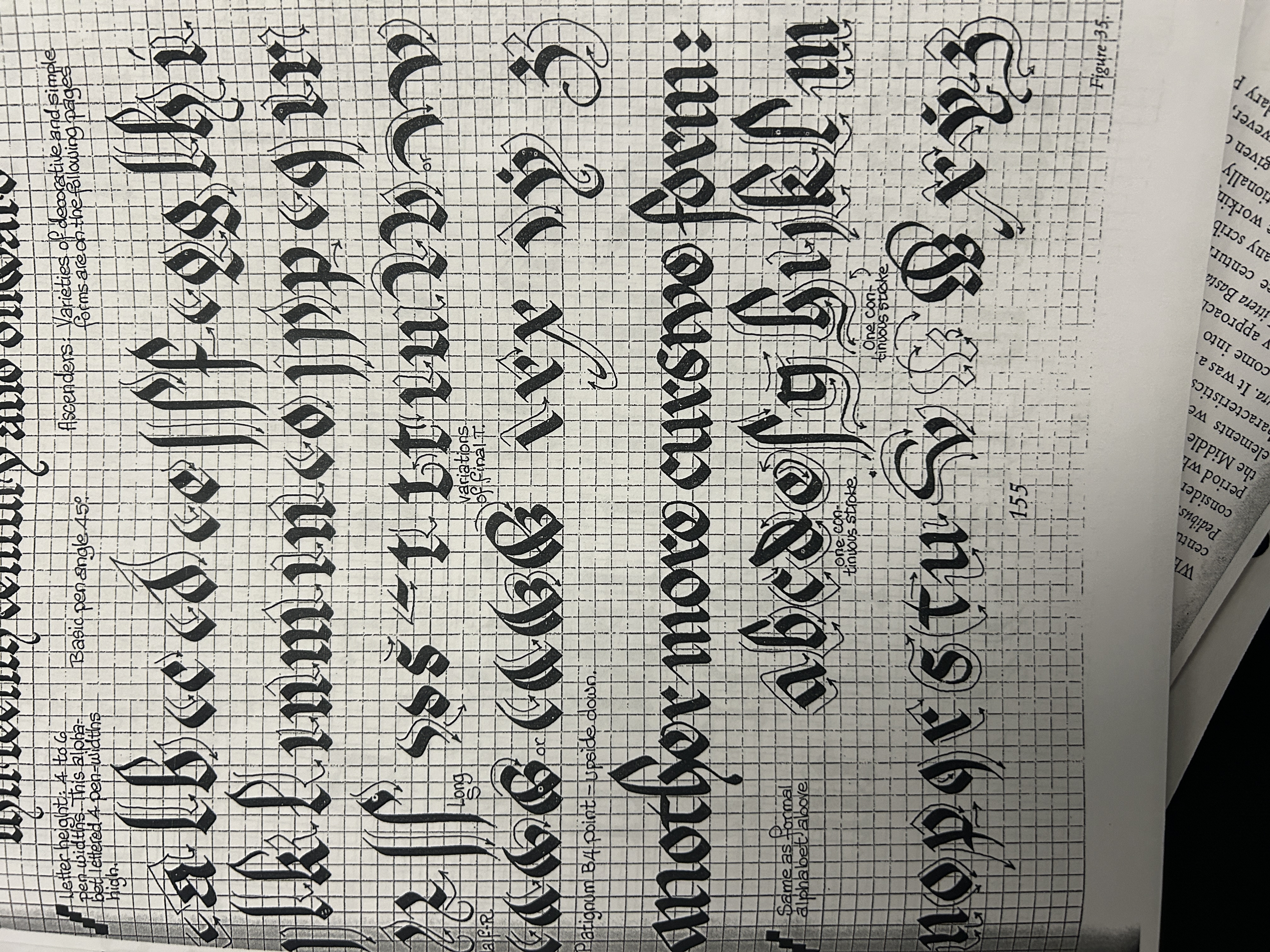
?
gothic bastarda

gothic textura

?
carolingian minuscule
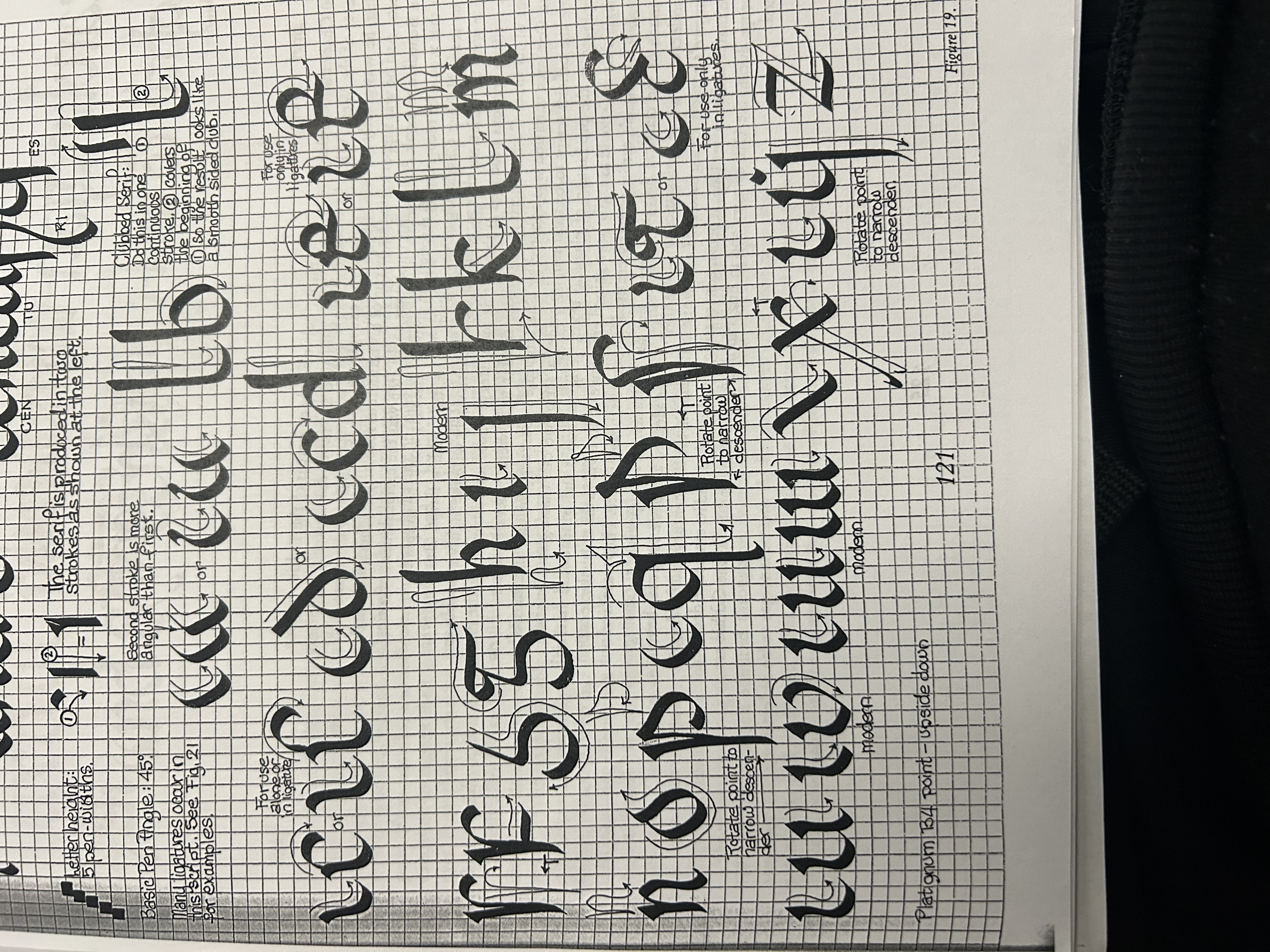
luxeuil minuscule
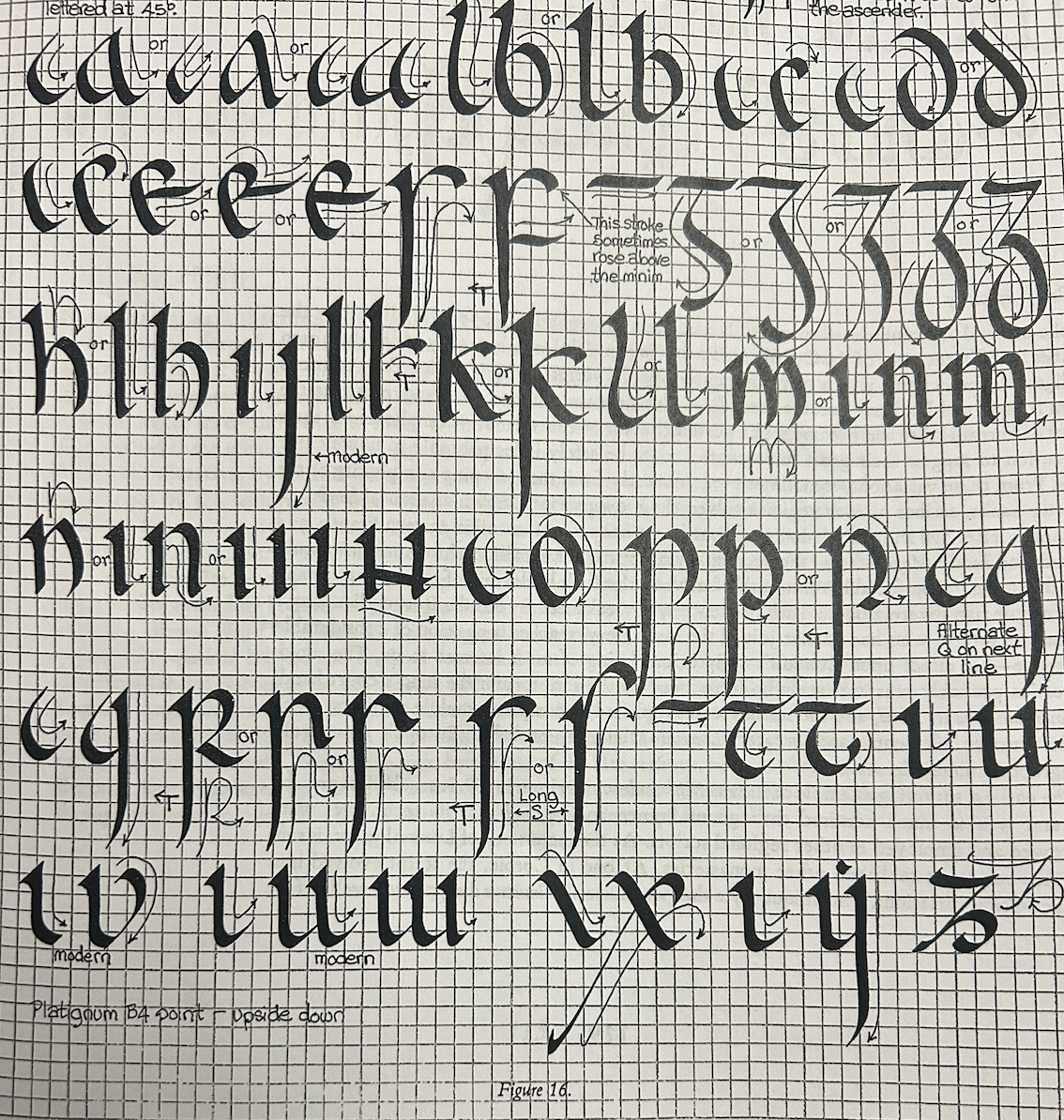
insular minuscule

insuulaar majuscule
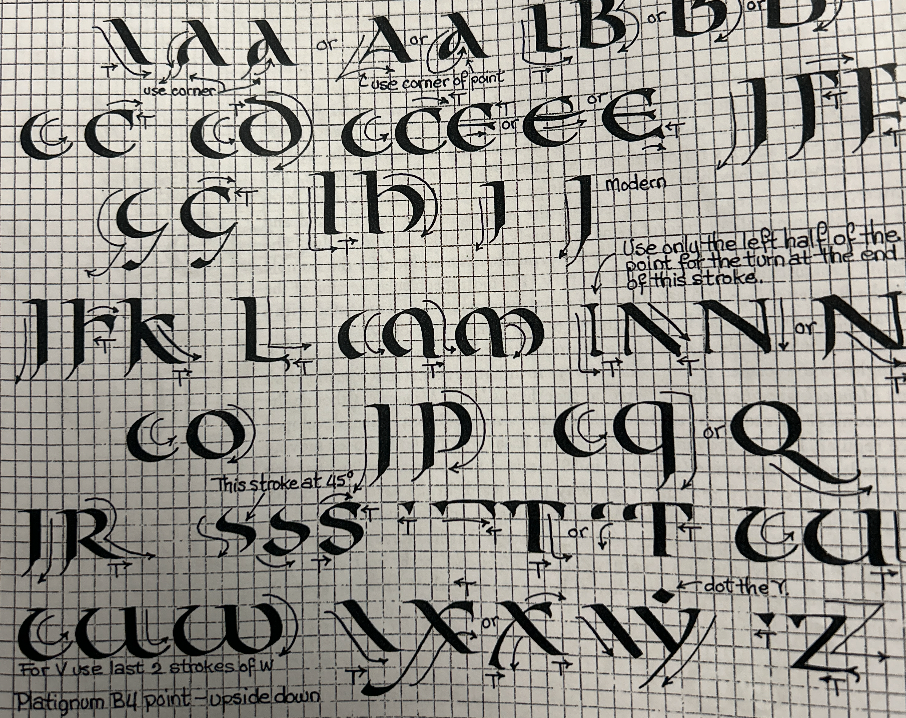
artificial uncial
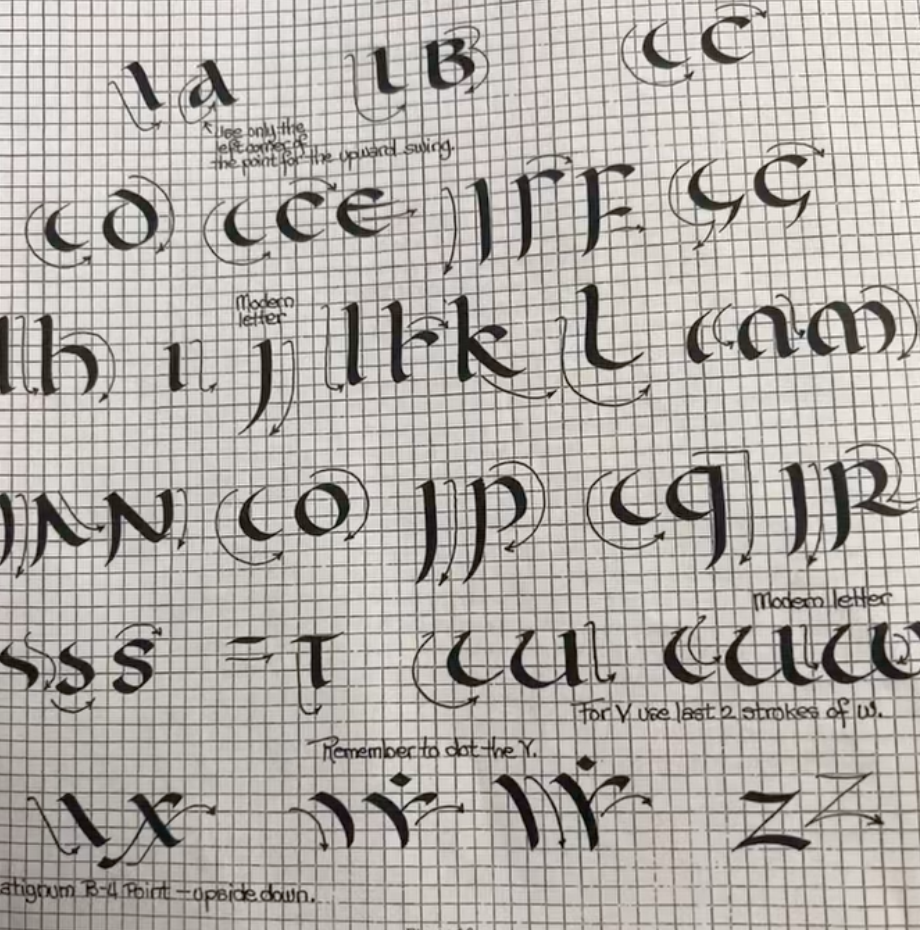
uncial
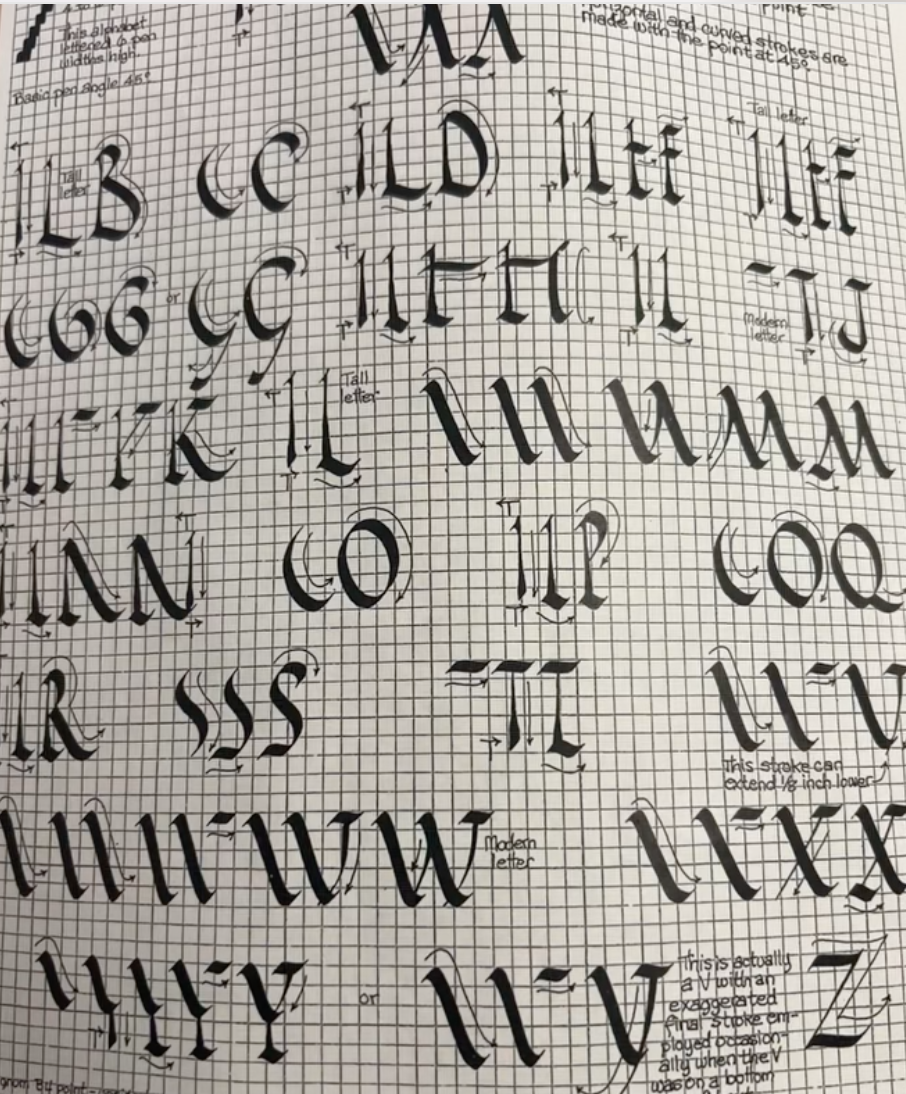
roman rustic